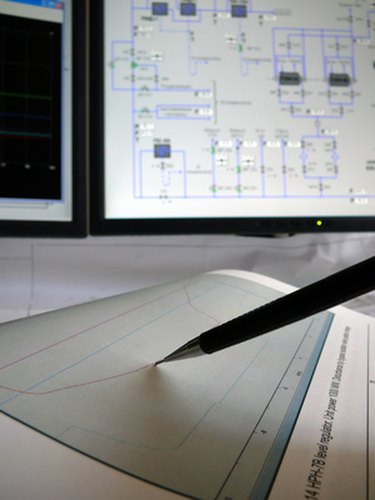
Data flow diagrams are used by information technology professionals and systems analysts to document and show users how data moves between different processes in a system. Analysts generally start with an overall picture and then move on to the finer details of each process.
Purpose
Video of the Day
Data flow diagrams provide a graphical representation of how information moves between processes in a system. Data flow diagrams follow a hierarchy; that is, a diagram may consist of several layers, each unique to a specific process or data function.
Video of the Day
History
Data flow diagrams originated with Chris Gane and Trish Sarson in 1979, who popularized the technique for structured analysis and design. Edward Yourdon and Tom DeMarco introduced another method in the 1980s which used circles instead of rounded rectangles to denote processes and which became popular with many systems analysts.
Gane & Sarson Symbology
Data flow diagramming employs four symbols to illustrate data movement; squares to represent external entities, the sources and destinations of data in a system; arrows to represent data flow; open-ended rectangles called to indicate stationary data stores; and rounded squares indicate transformations or manipulations to data.
Levels
Level 0 diagrams start at the most basic level, also known as the context level, and attempt to document systems as a whole. Analysts then drill down to the specifics of individual processes with level 1 diagrams.